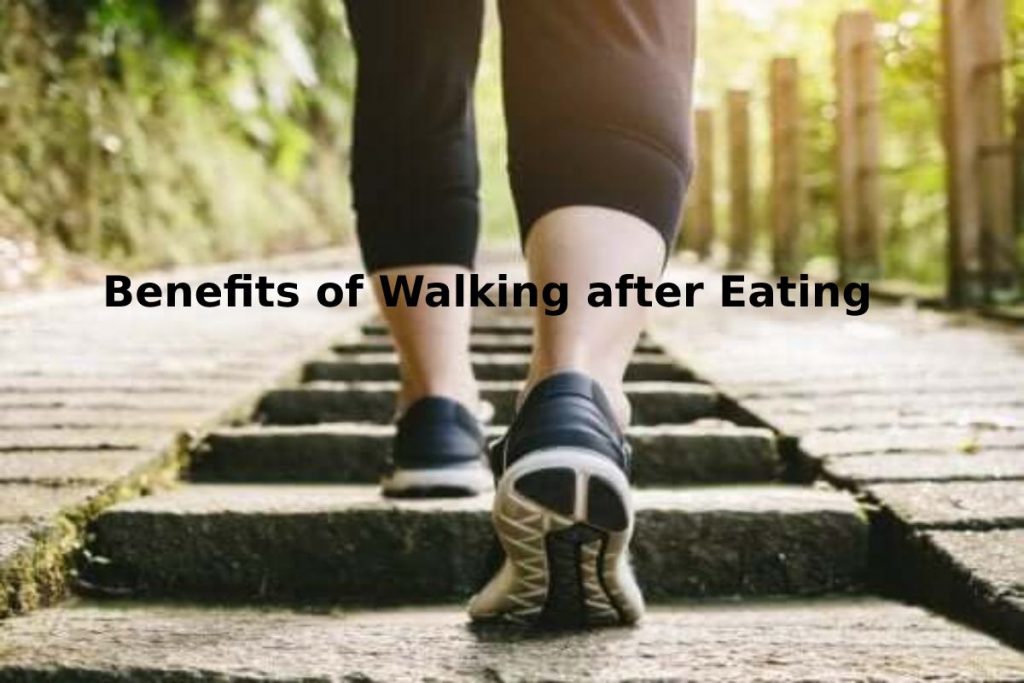Table of Contents
Introduction
Benefits of Walking After Eating – Lying down or sitting may be tempting, but is it healthy? This article will review all the essential facts about walking after eating.
Here are the most scientifically known benefits of walking after eating:
Improved Digestion
If you eat a meal after which you feel full and indigestion, go out for a walk, which will help improve digestion and facilitate the process of dismantling and analyzing food in the digestive region by stimulating the secretion of digesting enzymes.
Walking after eating helps relieve and prevent digestive problems, such as heartburn, constipation, bloating, and acid reflux symptoms.
Improve Sleep Quality
Walking after eating regularly helps relieve psychological and neurological stress and improve circulation, all of which help improve overall sleep quality, especially when walking after dinner.
Walking at night after dinner helps improve mental health in general. It is because the summary of today’s thoughts and events is in mind while walking, emptying the mind of any tension and thoughts before bed, thus sleeping easily and without anxiety.
Speed up Metabolism
If you’re one of the people who aspire to keep their weight under control, walking after eating may be an ideal choice.
Walking after meals helps stimulate and accelerate metabolism and burn fat and calories.
Regularization of Blood Sugar Levels
After eating a meal, your blood sugar level may rise significantly, which may pose a risk to a person with diabetes, and studies have shown that walking after eating may be particularly beneficial for individuals with diabetes for this reason.
Some studies have shown that walking after eating for type 2 diabetes may be more helpful in lowering blood sugar than any other exercise that may be done at any time during the day.
Walking after eating also helps prevent high blood sugar levels in people at risk of developing diabetes at some point in their lives.
Losing Excess Weight
In some cases, weight loss may not need to be sported and dieted, but it may not take more than a quick walk after eating to achieve the goal.
Mainly if a person follows a healthy lifestyle and follows a healthy and moderate diet.
Improve Blood Circulation and Lower Blood Pressure
Walking for 15 minutes after eating helps improve blood circulation and blood flow throughout the body.
Walking for short periods after meals also helps lower high blood pressure.
Other Benefits
Apart from what was mentioned earlier, there are other benefits to walking after eating:
Boost energy levels.
Strengthen immunity, and expel toxins from the body.
Promoting the work of internal members.
Overcome depression by reducing stress and improving mood.
Reduce triglyceride levels.
Feeling full after a meal and reducing cravings to eat.
How Long do You have to Wait after a Meal to Start Walking?
If you don’t have any stomach problems, you can walk right after eating without problems, as your body is still digesting the food you’ve eaten, allowing you to get the most benefits.
But if you are a person with stomach problems, such as acidity, it is best to wait 10-15 minutes after a meal and before going out for a walk.
What Kind of Walking is your Favourite after-Meal?
The response to this question depends on numerous reasons. For example, if your walking path includes a lot of ups and downs or stairs, make sure you have a snack, eat only half a meal before walking, and the other half after walking.
Foods you’d Rather Avoid before Walking
If you intend to walk after eating, you’d rather avoid eating certain types of food. Especially high-fat foods, caffeine sources, and sugary drinks.
It is preferable to eat foods containing complex carbohydrates, which help keep blood sugar levels constant and help improve digestion, such as whole-grain foods.
Walking Damage after Eating
Despite the benefits of walking after eating, some people may experience a stomach disorder associated with symptoms such as indigestion, diarrhoea, nausea, gases, and bloating when walking after eating.
Also Read: Bean Anaemia – Introduction, Fruits to Avoid and More
